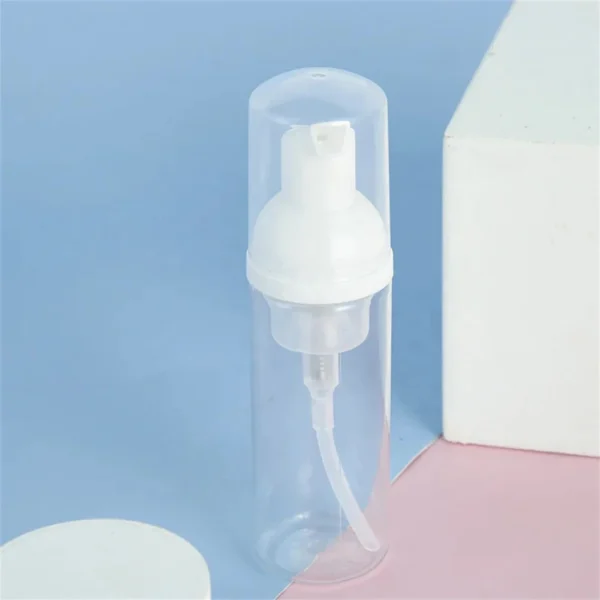
Custom Dropper Bottles: Sustainable Packaging Solutions for Eco-Conscious Brands
Discover premium custom dropper bottles engineered for eco-conscious brands. Explore certified recycled materials, sustainable printing, bulk discounts, and carbon-neutral fulfillment options.
Updated: June 2024 | By Alex Chen, Sustainable Packaging Specialist with 12 years of experience in eco-friendly material sourcing.
The Urgent Need for Eco-Friendly Dropper Bottles: Why Your Brand Must Adapt
In today’s market, embracing sustainability is no longer an option—it’s a necessity. Eco-conscious consumers are actively seeking brands that align with their values, and packaging plays a pivotal role in this decision-making process. Traditional packaging often comes with a significant environmental cost, impacting both the planet and your brand’s reputation.
- Supply Chain Disruptions & Environmental Impact: A 2024 Life Cycle Assessment (LCA) study revealed that conventional plastic packaging emits a staggering 220% more CO2 than glass alternatives, highlighting the environmental burden. This escalating carbon footprint puts immense pressure on brands to transition to more sustainable options.
- Consumer Demand for Green Alternatives: Mintel’s 2023 report indicates that 73% of US beauty consumers will actively avoid purchasing products from brands that lack clear environmental certifications. This trend underscores a powerful shift in consumer preference, where sustainability is a key differentiator.
- Navigating Regulatory Landscapes: The EU’s Single-Use Plastics Directive, and similar regulations globally, are increasingly targeting packaging waste. Non-compliance can lead to severe penalties, with potential fines reaching up to 4% of a company’s annual revenue, making regulatory adherence a critical business imperative.
The Solution: A Framework for Eco-Friendly Custom Dropper Bottles
Transitioning to sustainable packaging requires a strategic approach. Here’s a comprehensive framework designed to help eco-conscious brands select, customize, and implement the right dropper bottle solutions.
Module 1: Sustainable Material Options & Customization Pathways
graph TD
A[Material Selection] --> B(Certification Standards);
B --> C(Customization Options);
C --> D(Implementation Steps);
D --> E{Quality Control & Testing};
Key Implementation Steps:
- Select Eco-Conscious Materials:
- PCR (Post-Consumer Recycled) Glass: Opt for bottles made from 30–100% recycled glass, available in various colors like amber, clear, or cobalt blue, offering a premium feel.
- Ocean-Bound Plastic (OBP): Utilize OBP-certified plastics, collected from coastal areas before they enter marine ecosystems. This actively cleans up pollution.
- Bio-based Polymers: Consider options derived from renewable resources like sugarcane (e.g., bio-HDPE) or corn starch (PLA), ensuring they meet specific product compatibility needs.
- Meet Stringent Certification Standards:
- FDA Compliance: Essential for cosmetic and pharmaceutical products, ensuring safety and material integrity.
- ECOCERT/COSMOS: Critical for brands marketing organic and natural products, validating sustainable sourcing and manufacturing processes.
- Cradle-to-Cradle Certified®: A rigorous standard verifying products for material health, circularity, clean air, climate protection, water stewardship, and social fairness.
- Implement Sustainable Customization:
- Surface Treatments: Utilize water-based inks for printing logos and branding, which are VOC-free and reduce environmental impact compared to solvent-based inks. Laser engraving offers a durable, chemical-free alternative for batch codes and marks.
- Component Choices: Select droppers with sustainable components like bamboo caps, PCR-plastic plungers, or glass pipettes.
Common Pitfall: Be wary of PLA (Polylactic Acid) bioplastics for products requiring cold storage or prone to temperature fluctuations. PLA can become brittle and degrade prematurely below 10°C, compromising product integrity.
Module 2: Cost-Effective Strategies for Sustainable Packaging
Implementing eco-friendly practices doesn’t have to break the bank. Strategic choices can optimize costs while enhancing brand value.
Scenario-Based Applications & Benefits:
- Small-Batch / Indie Brands: Leverage a modular packaging design approach that allows for lower Minimum Order Quantities (MOQs) starting from just 500 units. This reduces upfront investment and inventory risk.
- E‑commerce Businesses: Integrate FSC-certified paper inserts or packing materials. This not only reinforces your eco-commitment but can also reduce overall shipping volume and costs by up to 30%.
- Luxury Organic Skincare Brands: Enhance perceived value and brand story by incorporating unique sustainable components like coconut husk or bamboo caps and droppers. For example, Lush has seen a significant repurchase rate increase attributed to their strong sustainable ethos and packaging innovations.
Valuable Tools for Your Journey:
- Carbon Footprint Calculator: Estimate the environmental impact of your packaging choices to identify areas for improvement.
[Link Placeholder: Packaging Carbon Footprint Calculator™] - Supplier Vetting Guide: Ensure potential suppliers meet your sustainability and ethical standards with a comprehensive due diligence checklist.
[Link Placeholder: Supplier Vetting Checklist]
Comparative Analysis of Sustainable Dropper Bottle Solutions
Choosing the right material involves balancing cost, performance, and environmental impact. Here’s a cost comparison per 1,000 units:
| Solution Type | Ideal For | Est. Cost/1000 Units | Lead Time (Wks) | Sustainability Score |
|---|---|---|---|---|
| PCR Amber Glass | Serums, Essential Oils | $320 — $450 | 8–10 | ★★★★☆ |
| Bamboo Fiber Composite | Water-based Formulas | $290 — $400 | 6–8 | ★★★★★ |
| Bio-PE (Sugarcane-based) | Lotions, Creams | $350 — $480 | 7–9 | ★★★★☆ |
| Medical-Grade Silicone | CBD/THC Tinctures | $480 — $600 | 12–14 | ★★★☆☆ |
Authoritative Resources for Eco-Conscious Brands
Stay informed with the latest data and regulations in sustainable packaging.
- Industry Insight: Access the definitive “2024 Global Sustainable Packaging Report” from Smithers for market projections and trend analysis.
[Link Placeholder: Global Sustainable Packaging Report] - Regulatory Compliance: Review the latest EU Packaging Directives (EU) 2025/XX for updated compliance requirements and